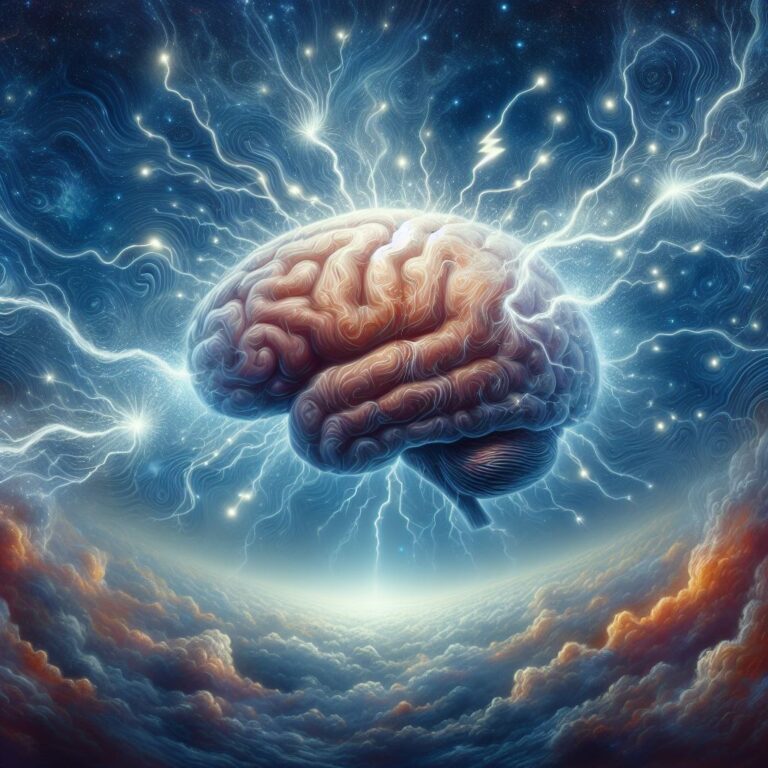Consciousness, the subjective experience of being aware, remains one of science’s greatest puzzles. Unlike gravity, with its observable pull, or photosynthesis, with its tangible energy conversion, consciousness is an internal tapestry woven from thoughts, feelings, and sensations. While we experience it firsthand, its underlying mechanisms and origins elude definitive explanation. This article embarks on an exploratory journey, delving into the current understanding of consciousness, the scientific quest to unravel its secrets, and the philosophical implications that may reshape our perception of ourselves and the world.
Unveiling the Neural Correlates: Mapping the Landscape of Consciousness
Imagine the brain as a bustling metropolis, with billions of neurons acting as citizens constantly exchanging information. Scientists believe that consciousness arises from the intricate interactions within this metropolis, but identifying the specific neural “districts” responsible remains a challenge. Techniques like functional magnetic resonance imaging (fMRI) and electroencephalography (EEG) offer glimpses into brain activity during conscious states, revealing areas like the prefrontal cortex and thalamus taking center stage. However, pinpointing the exact “spark” of consciousness within this complex network proves elusive, akin to deciphering the symphony from the cacophony of individual instruments.
From Individual Neurons to Collective Experience: The Binding Problem
One of the key hurdles in consciousness research is the “binding problem.” Imagine observing a red rose. Your brain receives distinct signals for color, shape, and texture, processed in different regions. But how do these disparate elements merge into a unified, coherent experience of the rose? This enigmatic process of binding, the glue that unites fragmented information into a holistic percept, remains a major research frontier. Is it a specific neural code, a synchronized dance of electrical activity, or something entirely different? Unraveling the binding problem holds the key to understanding how individual neuronal computations translate into subjective experience.
Beyond the Physical: Can Machines Dream? The Frontiers of Artificial Consciousness
As artificial intelligence (AI) strides forward, mimicking human-like capabilities, a tantalizing question arises: can machines achieve consciousness? While current AI excels at pattern recognition and learning, replicating the subjective, introspective nature of human consciousness remains a distant goal. Some argue that replicating the intricate neural architecture or developing sophisticated AI models may eventually unlock artificial consciousness. Others believe that a fundamental gap exists between silicon and flesh, with the embodied experience of a physical body playing a crucial role in shaping consciousness, a challenge machines may never overcome. The debate on artificial consciousness pushes the boundaries of our understanding, forcing us to re-evaluate our own unique place in the universe.
The Spectrum of Consciousness: Beyond the Human Frame
Exploring consciousness solely through the lens of human experience paints an incomplete picture. From the intricate communication dances of honeybees to the seemingly intelligent navigation of dolphins, the animal kingdom exhibits diverse forms of sentience and awareness. While attributing human-like consciousness to all creatures can be misleading, acknowledging their potential for subjective experience expands our understanding of the phenomenon. Studying animal cognition allows us to compare and contrast different forms of consciousness, potentially offering clues to unlock its universal essence.
Philosophical Implications: Redefining Self and Reality
Unraveling the mysteries of consciousness has profound philosophical implications. If consciousness arises solely from physical processes, does it diminish the concept of a soul or free will? Does artificial intelligience challenge our unique standing in the universe? These questions force us to re-examine our assumptions about selfhood, reality, and our place within it. The journey towards understanding consciousness may not only reveal its inner workings but also prompt a fundamental shift in our perception of ourselves and the world around us.
Maestro, Not Musicians: Beyond Dissecting the Brain
Forget dissecting individual notes; we’re on a mission to find the maestro’s baton, the hidden conductor that orchestrates the neurons into the symphony of consciousness. We’ve made progress, analyzing brain regions, studying cognitive processes, and mapping neural pathways. But a crucial question lingers: what unifies these elements into the seamless tapestry of subjective experience? This unifying principle, the “grand unifier” of consciousness, remains the holy grail in this scientific quest.
Decoding the Score: Beyond Individual Neurons
Some propose it’s a specific neural code, a secret language written in the firing patterns of neurons, binding disparate information into a coherent whole. Others envision a more holistic approach, where consciousness emerges from the dynamic interplay of various brain regions, like a melody arising from the harmonious interplay of instruments in an orchestra. But we’re not simply listening to the music; we’re searching for the score, the hidden instructions that translate individual notes into a captivating symphony.
From Passive Observers to Active Conductors: Unlocking the Secrets
Discovering this grand unifier isn’t a passive observation. It demands active exploration, experimenting with different models and observing their ability to recreate the subjective experience. This conductor’s baton might not be a single entity, but rather a complex interplay of factors – a unique choreography of neural activity, synchronized rhythms, and dynamic interactions. Cracking this code could unlock the deepest secrets of consciousness, bridging the gap between the objective world of neurons and the subjective realm of experience. Let’s stop analyzing the instruments and start searching for the conductor leading the grand symphony of consciousness.
Looking Ahead
The quest to unravel the mysteries of consciousness remains a work in progress, but the future holds promise. Advancements in brain imaging, computational modeling, and studies of animal cognition provide an ever-growing arsenal of tools for exploration. Collaborative efforts across disciplines, bridging the gap between neuroscience, philosophy, and AI research, offer new avenues for discovery. As we venture deeper into the enigma of consciousness, we may unlock not just secrets of the brain but also fundamental truths about ourselves and the nature of reality.
Check out more articles like this at Psychology Archives – Topic In One Article
